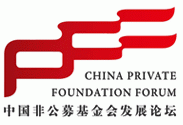Historical Reflection on Chinese philanthropy
I have been bothered by some questions for a long time on Chinese philanthropy – Traditionally, philanthropic virtues such as benevolence, charity, compassion, or generosity have always mattered in Chinese culture as evidenced by the teachings of Confucianism, Buddhism, Taoism, but why Chinese philanthropy is lagging behind? Why only 14% individuals donate their money, and 4% volunteer their time? Why philanthropy hasn’t picked up the same speed as the economic growth? Why actions, donations or volunteering, haven’t matched the enthusiasm in the public media yet?[break]
Spending the past 3 years in the USA studying American nonprofit and philanthropy have allowed me to conduct some comparative observations between Chinese philanthropy and American philanthropy. These comparisons have yielded a long list of differences between the two countries, from the incomplete legal structure, the disincentive tax policy, to the cumbersome registration and administration process, and lack of philanthropic consciousness among the public, etc.[break]
These differences may explain why Chinese philanthropy is lagging behind. However, I find it extremely hard to settle with those observations — these factors are closely related to government policies, which are not only beyond our immediate influence as philanthropic professionals in an authoritative society, but also take time to change.[break]
While horizontal cross-border comparison doesn’t yield satisfactory answers to my questions, shifting my research into tracking the charity culture in China has led me to some interesting findings. I realized that for most time in Chinese history, charity was the major form of philanthropy. It worked very well in the totalitarian agriculture economy before the political shift in social system in 1949. Then philanthropy was discontinued for a few decades after 1949, and today’s philanthropy carries a lot from traditional charity. From my research, traditional Chinese philanthropy often takes the form in clan philanthropy, religious philanthropy and social philanthropy, and they share 3 distinct characteristics: family/community-oriented; charity-focused; top-down approach. It turns out that the very legacy of traditional Chinese philanthropy has created much of the challenge for today’s philanthropic development in China.[break]
But does this mean we should totally abandon traditional philanthropy? No. I am actually quite relieved to learn all these challenges we face today don’t question the value of family and community connection, nor underplay the role of charity philanthropy, which creates a lot of potential for developing family foundations and community foundations. So, this reflective perspective has reassured me of the value in our tradition, and what we need to do is to reconnect to our traditional values, and complement it with visions and experience around the globe, then we can bring Chinese philanthropy to a new level.[break]
For those of you who might be interested, please click here for a full version of my essay in PDF format.



